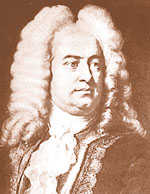It was only with this ethical demand of the great classical composers, which was aimed musically at a contrapuntal thematic working of the smallest musical elements - the natural elements of the microcosm of music , that the "dramatic", the "natural" and the "democratic" moved into symphonic creation.
A lack of recognition of this natural democratic musical drama by means of the counterpoint – which, with the appropriate musical mastership, also spatially and temporally integrates and so harmonises the most
|
“Sending
light Schumann |
Haydn later described his symphonies as "moral characters" and in them, he outlined the ethical obligations and responsibilities of the composer and the musician in the area of humanity. In their symphonic creations, Mozart and Beethoven also stood quite consciously in this new elemental musical tradition.
I have dealt thoroughly with this entire area of debate in the two books “Natural Music Creation” and “Natural Music Listening” – whereby, in the work “Natural Music Hearing”, I examine the application of the inner human strengths during the creation of music, and in the book “Natural Music Hearing” I describe the evolution of the inner human abilities in the process of systematic music recognition.
 |
“When
the blind
Haendel |